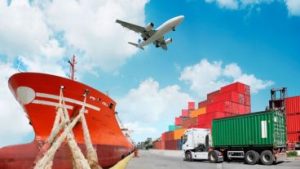Multimodal transport (also known as combined transport) is the transportation of goods under a single contract, but performed with at least two different means of transport; the carrier is liable (in a legal sense) for the entire carriage, even though it is performed by several different modes of transport (by rail, sea and road, for example). The carrier does not have to possess all the means of transport and in practice usually does not; the carriage is often performed by sub-carriers (referred to in legal language as «actual carriers»). The carrier responsible for the entire carriage is referred to as a multimodal transport operator, or MTO.
That is to say, it’s a type of transportation by which a user hires a logistics operator to this move a cargo from origin to final destination, and in which it is necessary to use more than one type of vehicle.
The operator is in charge of articulating the different modes of transport for a door-to-door delivery. In order for multimodal transport to be so named, in addition to using different means of transport, it must fulfill two other characteristics:
- The use of a single transport document, FIATA Bill of Lading (FBL), differs from intermodal transport, in which a document is issued for each means of transport.
- In addition, there should be no breakage of cargo, that is, goods cannot be separated during the journey.
Because of this last characteristic, multimodal transport is linked to the emergence of loading units which can move in different means of transport without having load break. Some of these units are the container and the mobile box (or swap).
The container is a recipient of load that allows the maritime and land transport. It has the characteristic to be waterproof and protect against weather.
Mobile box or swap is a freight unit for the carriage of goods having a size appropriate for railway and road. It differs from the containers that are not suitable to be transported by trucks, while the mobile box is it.
The Multimodal Transport is the combination of different means of transport, in order to facilitate the movement of cargo, i.e. making it faster and more efficient. 
The advantage of Multimodal Transport lies in the most efficient combination of multiple means of transport, whilst optimizing deadlines, cutting back on inventory costs, therefore keeping the costs of the merchandise under control. The combination of these also results in high environmental sustainability, since Multimodal Transport reduces the environmental footprint of transportation.
Despite the support of environmentalists and cargo transportation experts, multimodality might induce certain costs through the use of modal interfaces, such as transshipments, handling, etc. However, you may hire a Freight Forwarding Company to provide an interface between the various types of transport, without getting the importer or the exporter involved in this exchange.
For more complex shipments, or a more thorough exploration of the quality/price ratio of each part of the transportation, multimodal transport is a good, and often the only, option to consider, especially to/from countries that do not border on the sea.
In general, trucks cover short distances between the loading area and the transshipment point respectively between the place of arrival and the recipient. Long-distance haulage is conducted by other means of transport such as train, ship or even plane.
One of the advantages of multimodal transport for the contracting company is to have a single interlocutor throughout the entire process, without having to hire different logistics operators. In this way, you save on administrative costs, for having to make a single contract, and reduce the possibility of communication problems at some point in the transportation.
Others advantages:
- Being controlled by a single operator, the possibility of causing the loss of goods is reduced dramatically.
- It is much greater the certainty of the delivery date, since it is the only operator that controls all the transport necessary for it.
- When there is no load break, handling times and costs are reduced.
- The logistic operator will be the one who advises us on the route or the combination of means that are faster and competitive for our delivery, reason why they reduce the costs and the terms.
- Tracking and traceability of goods is easier.
In short, multimodal transport is very useful in the case of international freight transport, since, in the comfort of having a single logistic operator, we add the reduction of costs that suppress signing a single contract. The speed of delivery and the lowest cost allows the user of multimodal transport might offer their products at a more competitive price and respond with greater agility to the demands of the market.






